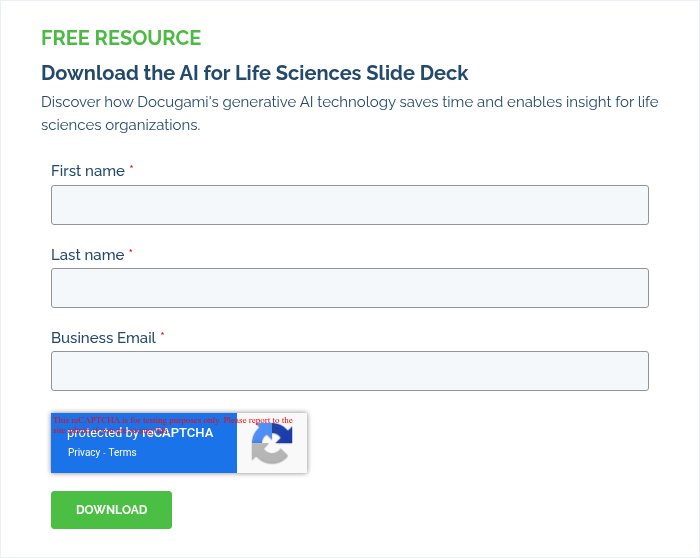How AI Systems Address These Challenges
Advances in AI now allow clinical teams to work with unstructured documents more efficiently. AI tools can analyze long-form text, extract structured data, and preserve context, making it easier to apply findings across clinical programs.
1. Document Understanding at Scale
AI models can process thousands of reports quickly, identifying and extracting consistent elements such as inclusion criteria, procedures, and outcome measures. These systems are capable of:
- Recognizing varied terminology such as “participant,” “subject,” or “volunteer”
- Parsing structured content within tables, footnotes, or nested clauses
- Tracking protocol amendments across multiple document versions
- Harmonizing variations in language across different regions or departments
2. Context-Aware Data Extraction
AI platforms that use semantic modeling can link each extracted data point to its surrounding context. For example:
- A dosage of “50 mg BID” may be connected to a specific age group within a treatment arm
- A safety event may be linked to both the intervention and the point in the trial timeline
- An endpoint can be tied to the statistical methodology used in analysis
This level of context improves the accuracy and relevance of secondary analysis.
3. Human-in-the-Loop Learning
AI systems often rely on human feedback during initial setup to ensure accuracy. Experts validate a sample of extracted data, which helps the model improve over time. As the AI adapts, less oversight is needed, allowing teams to scale analysis without sacrificing precision.
4. Structured Outputs for Integration
Once the data is extracted, AI systems can provide structured outputs in formats such as Excel, XML, or through APIs. These outputs can be used to:
- Integrate information into existing data lakes, dashboards, or regulatory platforms
- Generate automated abstracts that highlight essential findings for decision-makers
- Enable natural language interfaces so users can search documents conversationally and surface insights quickly
These capabilities reduce manual rework and help teams use their existing content more effectively.
How Knowledge Graphs Add Meaningful Context to Clinical Trials
Many AI tools extract data from documents, but relatively few can understand the relationships between pieces of information. This is where knowledge graphs become valuable.
A knowledge graph is a structured representation of how data points are connected. In a clinical trial setting, this might include:
- Linking dosage instructions to specific trial participant groups and time points
- Associating safety outcomes with intervention methods and protocol phases
- Mapping changes to the protocol and how they influence endpoints or analysis plans
- Tracking eligibility trends across multiple studies
Docugami uses knowledge graphs to create a network of relationships across every report. This allows teams to perform complex queries such as:
What were the key findings related to a specific subgroup of participants?
These types of questions are difficult to answer without tools that model the semantics and structure of the original document.
Real-World Applications Across the Clinical Trial Process
AI-powered document engineering supports a variety of use cases across the clinical trial process, from early protocol design through final reporting and regulatory submission.
|
Stage |
AI Use Cases |
|
Trial Design |
Protocol comparison, eligibility refinement |
|
Site Selection |
Matching investigators, predicting enrollment timelines |
|
Recruitment |
EMR screening, outreach message analysis |
|
Monitoring |
Safety flagging, discrepancy detection |
|
Reporting |
Abstract creation, automated document assembly |
A real-world example of this comes from a leading pharmaceutical company that used Docugami to improve how it handled thousands of clinical trial reports. The company had previously attempted automation using traditional tools but struggled to extract consistent insights from documents that varied in structure and terminology.
These tools were too rigid and couldn’t adapt quickly to new analysis needs or document types.
With Docugami, the organization was able to:
- Train the AI model on a small subset of their trial reports
- Extract complex, high-value data such as endpoints, protocol amendments, and population characteristics
- Automatically generate structured outputs, which were exported into the company’s data lake for downstream analysis
- Reduce manual review time and improve the consistency of safety and efficacy data across trials
The result was a faster, more reliable documentation process that freed up clinical and scientific staff to focus on high-impact work. This use case illustrates how document engineering can improve operational efficiency while supporting compliance and data reuse across the clinical research lifecycle.
Tools Enabling Document Engineering in Clinical Trials
While various AI platforms are entering the clinical research space, most focus on structured data, data entry, or patient-facing solutions. Docugami specializes in transforming unstructured clinical document information into structured, reusable formats.
Unlike systems that rely on rigid templates, Docugami learns from a small set of your documents. It builds a full semantic representation of each document and produces structured outputs from text and tabular information: e.g. knowledge graphs. This approach makes it easier for teams to extract critical information from clinical trial reports, monitor changes over time, and compare findings across trials.
Docugami’s strength lies in document understanding and information extraction from long-form, natural language content. The platform reduces tedious tasks and increases visibility into data that was previously hard to access.
Conclusion: AI Enables Smarter Use of Clinical Documentation
Clinical trial documents contain essential information but are often difficult to analyze and reuse. AI-powered document engineering allows research teams to turn these complex documents into structured, searchable resources that improve consistency, reduce manual workload, and support better decisions.
By enabling ANY/ALL the content to be selected, not just pre-ordained or pre-formatted content, platforms like Docugami enable faster clinical research, more reliable data, and ultimately, better patient outcomes.
Interested in making your clinical trial documents searchable, structured, and actionable?
See how document engineering can help your team work faster and smarter—without changing your existing workflows.


